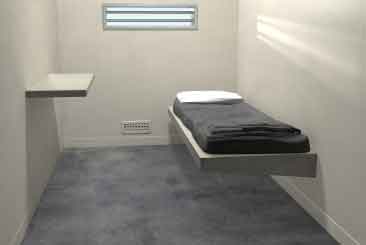|
|
| An Effective Recovery Housing Model for Both Rural and Urban Areas |
| By John Rees |
| Published: 01/31/2022 |
 As Kentucky Commissioner of Corrections, I had the privilege of working with then governor Dr. Ernie Fletcher to provide alternatives to incarceration for misdemeanor and Class D felony offenders. The result was “Recovery Kentucky,” a program that’s proven remarkably effective in returning individuals with a substance use disorder and others to the community as productive members of society.
As Kentucky Commissioner of Corrections, I had the privilege of working with then governor Dr. Ernie Fletcher to provide alternatives to incarceration for misdemeanor and Class D felony offenders. The result was “Recovery Kentucky,” a program that’s proven remarkably effective in returning individuals with a substance use disorder and others to the community as productive members of society.
It began when Governor Fletcher asked me to meet with community members to hear their ideas regarding the development of ten drug treatment facilities, several to be situated in rural areas. Construction of the buildings was to be funded through a blended funding model (explained later in this article) with day-to-day operating costs covered through contracts with corrections departments. We were soon able to build ten 100-bed centers, a number that’s since grown to 18 (nine for women and nine for men). In 2019, Dr. Fletcher launched the non-profit Fletcher Group which later gained HRSA funding to establish the Fletcher Group Rural Center Of Excellence. The RCOE’s Subject Matter Experts and Outreach and Engagement specialists are now at work extending the housing and treatment program Dr. Fletcher and I pioneered in Kentucky to rural communities across the country. Five key elements are required to implement the program.
As Criminal Justice Specialist for the Fletcher Group Rural Center Of Excellence, I’m in a position to arrange support at no cost for any rural community in need of the evidence-based Technical Assistance we provide. I know from experience that doing so can dramatically improve a Corrections Department’s re-entry services, allowing departments to serve more clients and improve outcomes while developing positive, meaningful relationships with members of the local community. CONTACT INFO John Rees can be reached by emailing mday@fletchergroup.org or visiting the Fletcher Group website at https://www.fletchergroup.org. John Rees, the Fletcher Group’s Criminal Justice Specialist, formerly served as Kentucky’s Commissioner of Corrections where he worked with recovery centers to provide alternatives to incarceration for misdemeanor and Class D felony offenders. He has also served as Vice President of Business Development at the Corrections Corporation of America and as a Director, Facility Administrator or Consultant in numerous states including Oklahoma, Texas, Louisiana, Tennessee, New Mexico, and Florida. He has also published several articles such as Establishing Partnerships Between Correctional Agencies and University Researchers to Enhance Substance Abuse Treatment Initiatives and is the author of the book, My Life: John D. Rees's Four-Decade Career in Corrections. In 2013, he was inducted into the Hall of Fame at Florida State University’s School of Criminology. |
MARKETPLACE search vendors | advanced search

IN CASE YOU MISSED IT
|


Comments:
No comments have been posted for this article.
Login to let us know what you think